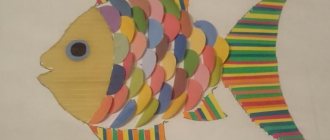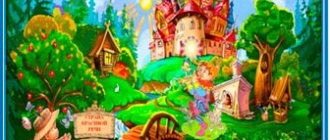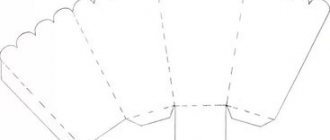"LEGO Country"
LEGO construction sets have a lot of different parts, and for ease of use with children, the names of the parts are worked out. LEGO bricks come in different sizes and shapes. The names of parts and the ability to identify a cube (brick) of a certain size are reinforced with children over several lessons until the children have fixed these names in their active dictionary.
During classes, the teacher invites children to watch presentations, videos with stories on the topic, which show the moments of assembling the structure, or present intellectual tasks.
When planning joint activities, the teacher gives preference to various game forms and techniques in order to avoid monotony. Learning to build a model step by step allows them to move forward at their own pace and stimulates the desire to learn and solve new, more complex problems. The topics of the lessons are selected in such a way that, in addition to solving specific design problems, the child expands his horizons: fairy tales, architecture, animals, birds, transport, space, etc.
In a collaborative LEGO building activity, the teacher encourages children to identify what an object is like and how it differs from others; teaches to master the ability to measure the width, length, height of objects; solve design problems “by eye”; develop imaginative thinking; imagine objects in different spatial positions. During classes, the teacher works on the development of imagination, fine motor skills (manual dexterity), creative inclinations, the development of dialogic and monologue speech, and the expansion of vocabulary. He pays special attention to the development of logical and spatial thinking, teaches how to work with the proposed instructions, diagrams, and construct a building according to a plan, given conditions, and a model. The teacher begins working with children with the simplest buildings, teaches how to correctly connect parts, examine a sample, “read” a diagram, and first correlate it with a specific example of a building. When creating structures, the teacher teaches children to analyze a sample or construction diagram, find the main parts in the building, name and show the parts from which these parts of the object are built, and determine the order of construction actions. The teacher invites each child participating in the work to complete the task to express his attitude towards the work done, about the progress of the task, about the purpose of the structure.
After completing each individual stage of work, the teacher, together with the children, checks with the children whether the parts are connected correctly and teaches them to compare with a sample or diagram. Depending on the topic, goals and objectives of a particular lesson, the proposed tasks can be completed individually or in pairs. The combination of various forms of work contributes to the acquisition by children of social knowledge about interpersonal interaction in a group, in a team, learning, exchange of knowledge, skills and abilities takes place.
Project in the senior group on light engineering
Slide description: December 1. Winter fun 2. New Year's kaleidoscope 1. Modeling a snowman and building a winter playground 2. Creating a fairy-tale vehicle - teach how to create a plot composition on a board, consolidate skills in building fences and gates, develop children's imagination and creativity. Continue to learn how to compare structural parts by color, shape, size. Encourage the desire for constructive activity, the creation of structures that correspond to the purpose of the intended object. teach planning work using a story about a planned subject, develop imagination and constructive imagination. To develop and support children’s plans in the process of developing constructive activities, and to help in its implementation. To develop the ability to use acquired knowledge in independent buildings. January 1. Furniture 2. Our life - dishes, food 1. Furniture 2. Design by design to develop the ability to identify their functional parts in real objects; learn to analyze a sample. To develop the ability to analyze an object, identify its main parts and details, their components, determine their size, shape, spatial relationships of parts, determine their purpose. Practice selecting parts in accordance with a phased graphical model. teach in advance, think about the content of the future building, give its general description; develop creative initiative and independence. Learn to build in a given sequence, understand its feasibility. Strengthen the ability to select structural parts necessary for construction in accordance with the subject and graphic sample. February 1. Transport 2. Military equipment 1. Train 2. Airplane introduce techniques for connecting bricks with wheels, with each other, with the main parts of the train; develop fantasy and imagination. To develop skills that ensure the identification of characteristics and properties inherent in a sample, and to form, on this basis, generalized ideas about the object being designed. Practice building a familiar design using a graphic model, correlating the elements of the graphic model with parts of the object. talk about the profession of a pilot; teach how to build an airplane, highlighting the functional parts; develop interest and creativity. Teach children to independently find individual ways to solve a given problem related to rebuilding a building in accordance with given conditions. Encourage children to reason out loud when solving a constructive problem, and encourage such manifestations.
CONSTRUCTION PROJECT “We imagine, we create, we design!”
Accessibility and visibility
Integration of developmental training,
Individualization and differentiation of the educational process,
Active development of emotional-aesthetic and moral-evaluative attitude towards reality, nature, psychological comfort and variability.
The principle of phasing, which entails the distribution of activities between all participants in the educational process.
Approaches to project formation:
Personality-oriented:
The pedagogical process has an active and creative nature, which allows, through reliance on systems of interrelated concepts, ideas and methods of action, to ensure and support the processes of self-awareness, self-expression of the child’s personality, and the development of his unique individuality
Individual:
It involves the widespread introduction of new non-traditional forms and methods of education, providing an individual approach to each child, with the aim of developing individuality
Cultural:
Creating conditions for the most complete (taking into account age) acquaintance with the achievements and development of the culture of modern society and the formation of various cognitive interests in folk art and the history of their homeland
Differentiated:
Differentiation in various types and forms is assumed, taking into account individual-typological characteristics of the individual in the form of grouping of students and different construction of the learning process in selected groups.
Activity:
It is based on the concept of “leading activity” existing in psychology. The draft stipulates that the “leading activity” is constructive activity.
Project stages
Preparatory
Questioning parents;
selection, analysis of programs and methodological literature;
selection of materials and equipment for design;
selection of consultations for parents about the importance of design in
development of cognitive and research activities of children;
Basic
Project implementation activities;
GCD, joint activities, observations;
Final
Analysis of project results
Type of construction material:
1. Building material - volumetric (or planar) wood
painted (or unpainted) building parts simple
geometric shape.
2. Paper, sticks.
3. Colored soft and hard volumetric large-sized modules.
4. Different types of constructor.
Project result
The main feature of children's design is the establishment of the spatial arrangement of the elements of an object and its subordination to a certain logic. During the implementation of the project, children name and recognize the details of the LEGO and Baby construction sets, can replace the missing part with a similar one, and are able to create structures from different types of construction sets at their own request; know how to use different means to achieve results (diagrams, models, drawings, samples). The unity of the children's team is observed: the skills of cooperation with a partner have been formed, the pupils are able to solve problems together, distribute roles, explain to each other the importance of this constructive solution, strive to become a participant in a collective role-playing game using crafts from various types of construction sets.





